Posted by Elena del Valle on August 29, 2014
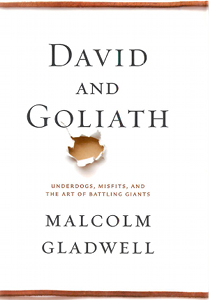
David and Goliath
Photo: Hachette Book Group
Author photo: Brooke Williams
We are impressed by size and strength, assuming giants, people or companies, should win in an encounter, according to Malcom Gladwell, a journalist and author. He believes that “much of what is beautiful and important in our world comes from adversity and struggle.”
In David and Goliath Underdogs, Misfits, and the Art of Battling Giants (Little Brown and Company, $29) he discusses how while the giants might be winners most of the time, sometimes the underdog might overcome adversity to vanquish the superpower. The 305-page hardcover book published in 2013 is divided into three main parts and nine chapters in which he explores the general theme of underdogs overcoming the odds to excel.
He explains at the beginning that facing overwhelming circumstances “produces greatness and beauty,” and that being disadvantaged in a lopsided conflict changes people, sometimes for the better. The lesson, he concludes, is that the powerful and strong are not always as we perceive them.
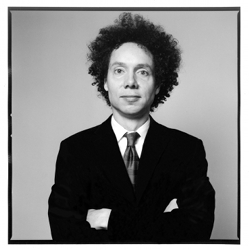
Malcolm Gladwell, author, David and Goliath
Throughout the book he uses examples to illustrate the points he wishes to make about how it is possible that a disadvantage such as dyslexia or loosing a parent at a young age may make people stronger than they might otherwise have been in the absence of the hardship. In other words, what doesn’t kill us might make us strong and able to beat a difficult situation to our favor.
Many American presidents and British prime ministers suffered the loss of a parent in their youth at a higher rate than the general population, he says. He points out that while such a loss is common among society’s losers it is also in evidence among its winners and wonders whether such a situation might become an advantage.
To research the chapter on the Troubles in Northern Ireland he spent a summer in Belfast. He was surprised to discover how small the areas in dispute, that had played a major role in British politics for three decades, were. Goliaths, he says, still win most of the time. The thing to remember is that they don’t win all of the time, and perhaps not nearly as often as we might expect them to.
Gladwell, a staff writer at The New Yorker since 1996, lives in New York. Prior to this book, he wrote What the Dog Saw, Outliers, Blink, and The Tipping Point.
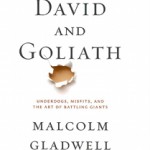
Click to buy David and Goliath
Comments:
Filed Under: Books
Posted by Elena del Valle on August 22, 2014

The Web Startup Roadmap
Photos: JP Stonestreet
After selling two websites in 2008, JP Stonestreet wrote The Web Startup Roadmap: Navigate Your Way to a Successful Online Business (Ripen Publishing, $22.95) to share his ideas about building an online business from scratch, marketing, running and preparing it for possible sale.
“The biggest challenge was the actual writing of the book. It’s over 300 pages! I had no idea it would be that long when I started writing it. If I had it to do over again, I’d split it up into 3 different books that are much shorter. Readers like smaller books better, too. Especially when the content is challenging,” Stonestreet said by email in response to a question about the challenge of writing the book.
An understanding of a small target audience is necessary at the beginning, he says in the book. Once your idea proves successful you can expand your audience. He lists several examples of companies that started targeting a niche audience and grew their audience over time.
When asked who his book audience is he said, “I wrote this book for non-technical people who want to start an online business or expand their current online presence but aren’t sure what to do or even where to start. The web is accessible to everyone, but understood by very few in comparison. My goal was to lift the veil and help more business owners understand how they can use it to build and grow their businesses.”
A good idea that is well developed is also necessary, as is offering something that sets you apart from competitors, he says, describing traits successful start-ups share.
In the book, he discusses business models he believes work online. The 300-page softcover book, published in 2012, is divided into five sections: Planning for Success, Starting Your Startup, Building Your Website, Marketing Your Website, and Running Your Business. In the third one he outlines his ideas about web business essentials.

JP Stonestreet, author, The Web Startup Roadmap
For him, “The biggest takeaway from publishing the book was to start promoting it before you even start writing it. After I sold my company, I wanted to document all the lessons I learned so I’d remember them. After writing pages and pages of notes, I decided to put them in a book, which led to The Web Startup Roadmap. Unfortunately, I didn’t think to promote it until it was written and published so I missed out on a lot of opportunities to raise awareness and attract press coverage. The lesson I share with everyone is to start promoting your book on social media and to your following as soon as you get the idea and the title.”
In the final two sections, he discusses marketing strategies such as affiliate marketing, advertising, social media, emails and search engine optimization; and the aspects of growing the business beyond the initial stages toward an eventual sale.
The biggest takeaway for readers? “The first section of the book discusses my long list of failures and the lessons I learned from them. If readers only take one lesson from the book, it should be the value of perseverance. Failure is inevitable if you’re a risk taker, but success is inevitable if you don’t let failure stop you from trying,” the author said.
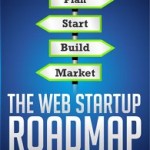
Click to buy The Web Startup Roadmap
Comments:
Filed Under: Books
Posted by Elena del Valle on August 8, 2014
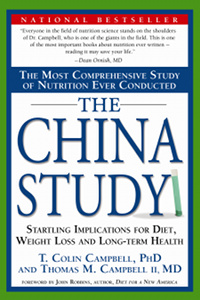
The China Study
Photos: BenBella Books, Inc.
A good diet is one of the most important ways to achieve and maintain optimum health, say T. Colin Campbel, Ph.D. and Thomas M. Campbell II, M.D. In The China Study Startling Implications for Diet, Weight Loss and Long-Term Health (BenBella Books, $16.95), published in 2006, and the Spanish language edition El Estudio de China Efectos Asombrosos de la Dieta, la Pérdid ade Peso y la Salud a Largo Plazo (BenBella Books, $17.95), published in 2012, the father discusses his reasoning and the data he relied on to reach his conclusions. He points out that despite spending more per person on health care than any other country the United States is struggling with the health of its citizenry.

El Estudio de China
Obesity, diabetes, cardiac disease, high cholesterol, and cancer are among the best known signs of trouble. They and other illnesses lead half of Americans to take prescription medications every week, Colin Campbell explains in the Introduction. The 419-page softcover book, (481 pages in the Spanish edition) is divided into four main sections: The China Study, Diseases of Affluence, The Good Nutrition Guide, and Why Haven’t You Heard This Before?
As director of a comprehensive study of diet, lifestyle and disease Colin Campbell learned that the people who got the most chronic diseases were the ones who ate the most animal products. He went on to discover that the effects of such diseases could be reversed with a healthy diet. He was surprised to discover the level of confusion that exists due to misinformation.
Based on his many decades of diet and health research he has become convinced that heart disease can be prevented and even reversed without surgery or drugs. Eating the right foods is the secret, he believes.
In Appendix C, he discusses the role of vitamin D in health, pointing out that people living in places with low sunshine are more prone to certain diseases such as type 1 diabetes, multiple sclerosis, rheumatoid arthritis, osteoporosis, and breast, colon and prostate cancer. One quarter of the amount of sunshine needed to produce a slight redness to your skin, two to three times a week, will produce and store the necessary amount of vitamin D, according to the author. An excess of animal protein which create an acidic blood environment can affect the vitamin D process in the body, he points out.
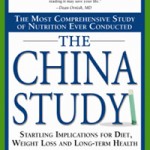
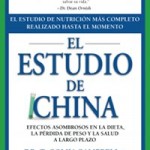
Click to buy El Estudio de China
Comments:
Filed Under: Books
Posted by Elena del Valle on August 1, 2014

Target Opportunity Selling
Photo: McGraw-Hill
In Target Opportunity Selling: Top Sales Performers Reveal What Really Works (McGraw-Hill, $28), Nicholas A.C. Read, author of Selling to the C-Suite, outlines the strategies he believes are successful for top corporate sellers. Read begins by introducing a model, The Sales Expansion Loop, which he says assigns Marketing, Sales, Management, and Service roles for targeting sales opportunities throughout the stages of a long-lead sale.
He based the Sales Expansion Loop on first hand interviews with hundreds of sales professionals around the world. His recommendations are based on 20,000 hours with business to business sellers in companies of various sizes and diverse locations, according to the book.
The 316-page hardcover, book published this year, is divided into 15 chapters: Beyond the Sales Funnel, Research, Contact, Precision Questions, Qualify Their Interest, Qualify Your Seat at the Table, Qualify Your Ability to Win, Social Capital, Find the Influencers, Align To Key Stakeholders, Sell Your Solution, Form A Competitive Strategy, Establish Your Proof, Compete on Value, and Closing and Opening.
In the final chapter, the author recommends that sellers get together with their customers to create a report of sorts in which they address after the sale issues, measurement and results. He also mentions that sellers request testimonials from happy customers, take their pictures and display them. He says “Top sellers collect case studies and reference stories like trophies…”
Read, former executive director at Ernst & Young, is the founder and managing partner of the SalesLabs. He is a speaker, consultant, and columnist.

Click to buy Target Opportunity Selling
Comments:
Filed Under: Books
Posted by Elena del Valle on July 25, 2014

Mind Over Medicine
Photo: LissaRankin.com
Lissa Rankin, MD, a physician and New York Times bestselling author, is convinced that the lessons she learned over years of medical school and clinical practice are not all set in stone. In her 2013 book Mind Over Medicine: Scientific Proof That You Can Heal Yourself (Hay House, $24.95), she shares the process that led her to discover what she believes is a better way to health, and what it might mean to patients.
Your mental attitude, the author says, is the most important factor in your health even ahead of sleep, nutrition, weight, exercise and lifestyle. According to her website, she is “on a grass roots mission to heal health care by repairing the doctor-patient relationship, while empowering both patients and health care providers to marry the best of Western medicine with mind-body approaches scientifically proven to activate the body’s natural self-repair mechanisms.”
In the 259-page hardcover book she says that for more than 50 years the medical establishment has been proving the mind can heal the body. In a candid easy to read style she shares her personal growth path and conclusions.
She wraps up the book with six steps she believes may optimize a body’s natural self-repair mechanisms. She proposes that it is essential to believe you can heal yourself with the support of others. Listening to your body’s signals or what she calls the Inner Pilot Lights is key, she says. If after seeking medical advice you don’t have a diagnosis identify what the source of your problem might be and figure out a way to address it, remembering to be your own healthcare advocate, the author suggests. Realize that the results you obtain may not be those you sough initially, she says.
Rankin is founder of the Whole Health Medicine Institute training program for physicians and other health care providers. When not spreading her message, she likes to hike, paint, and practice yoga.
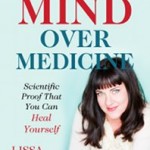
Click to buy Mind Over Medicine
Comments:
Filed Under: Books
Posted by Elena del Valle on July 11, 2014

Missing Microbes
Photo: Henry Holt and Company, Troi Santos NYULMC
The health of our body depends in part on the balance the exists between bacterial and human cells. Experts estimate that for hundreds of thousands of years bacterial and human cells have coexisted in a peaceful symbiosis that resulted in the relative health of our bodies, and that we acquire microbes by the time we are three years old. They thrive in our gut, noses, mouth, and skin, and they play an essential role in keeping us healthy. The excessive dependence of modern medicine on antibiotics and Cesarian sections is threatening the equilibrium that allows us to combat diseases by destroying important microbes and making us sick, according to Martin Blaser, M.D., director of the Human Microbiome Project at New York University.
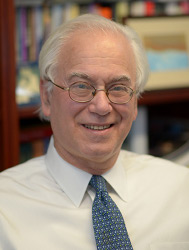
Martin Blaser, M.D., author, Missing Microbes
In Missing Microbes How the Overuse of Antibiotics Is Fueling Our Modern Plagues (Henry Holt, $28), Blaser examines how drugs considered at one point the solution to many health problems may be playing a role in the rise of obesity, asthma, allergies, diabetes, and certain forms of cancer. He believes exposure to antibiotics in early life is among the greatest dangers to our health, pointing out that American children receive on average seventeen courses of antibiotics before the age of twenty. He is concerned that many children are growing without all the microbes they would have had but for the antibiotics they receive.
While he doesn’t propose the elimination of antibiotics or C-sections from the practice of medicine, in the 273-page hardcover book he suggests we examine their use closely. At the same time, he suggests that we search for ways to replace the missing microbes. Blaser, who
has studied the role of bacteria in human disease for over 30 years, founded the Bellevue Literary Review.
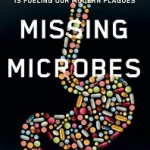
Click to buy Missing Microbes
Comments:
Filed Under: Books
Posted by Elena del Valle on June 27, 2014
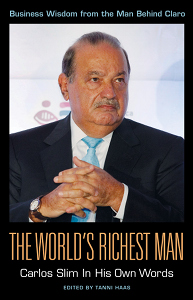
The World’s Richest Man
Photos: Agate Publishing, Inc.
Do rich and powerful businessmen share life lessons when they speak? Publishing company Agate executives think so. They launched In Their Own Words, a series featuring quotes from Steve Jobs, Bill Gates, Warren Buffett, Mark Zuckerberg, Richard Branson and most recently Carlos Slim, one of the wealthiest businessmen in the world. The World’s Richest Man: Carlos Slim in His Own Words (Agate Publishing, $10.95) edited by Tanni Haas, Ph.D. was published this year.
In addition to his wealth, Slim is also known because of he is part owner of the famous New York Times Company. The Mexico born businessman has a fortune estimated at $72 billion; lives in relatively modest home in Mexico City; and has transferred day to day management of his empire to his three sons, according to the Introduction.
A sample quote from the 148-page softcover book, from the Academy of Achievement, December 2, 2007, is: “I think that work is not only a social responsibility, but it is an emotional need. You need to work. You need to do things. You need to be active. You cannot be lazy.”
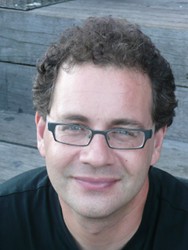
Tanni Haas, Ph.D., editor, The World’s Richest Man
The book is organized by topic to facilitate browsing, including Business and Investment, Leadership, Personal, Philanthropy and Education, and Politics and Economics. Agate B2’s In Their Own Words series titles are I, Steve: Steve Jobs In His Own Words, edited by George Beahm, a New York Times bestseller; Impatient Optimist: Bill Gates In His Own Words, edited by Lisa Rogak; The Oracle Speaks: Warren Buffett In His Own Words, edited by David Andrews, and Boy Billionaire: Mark Zuckerberg In His Own Words, edited by George Beahm. Haas, professor, City University of New York Brooklyn College, is author of Making It in the Political Blogosphere and The Pursuit of Public Journalism.
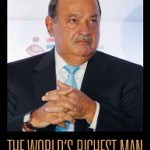
Click to buy The World’s Richest Man
Comments:
Filed Under: Books
Posted by Elena del Valle on June 13, 2014

Nice Companies Finish First
Photo: Shankman.com
The era of self centered authoritarian leaders is dead. Long live the new era of nice leaders who care about more than the bottom line. So say Peter Shankman and Karen Kelly in Nice Companies Finish First Why Cutthroat Management Is Over and Collaboration Is In (Palgrave Macmilan, $26).
In the 245-page hardcover book Shankman argues that people work together in an “atmosphere that is conducive to civility and good cheer” at many successful companies. The positive attitude comes from the top and trickles down through the ranks, according to the author. A similar situation is present when the atmosphere is negative, he says. He points to research that indicates productivity is low where the work environment is unpleasant.
As examples of nice executives he mentions Richard Brandson at Virgin, Shantaul Narayen at Adobe, Dave Needleman of Jet Blue, Tony Hsieh of Zappos, Steve Jobs of Apple, and Kenneth Chenault at American Express. After speaking with dozens of leaders he considers nice he identified nine characteristics he shares in the book and hopes future leaders will embrace.
They are: enlightened self interest, making themselves accessible, the ability to listen well, being responsible and ethical managers, having loyalty to the whole company, maintaining an optimistic attitude, being customer oriented, competing based on merit, and caring.
Shankman is a principal at Shankman|Honig, a customer support and marketing consultancy. His two other books are Can We Do That?! Outrageous PR Stunts That Work–And Why Your Company Needs Them and Customer Service: New Rules for a Social Media World.

Click to buy Nice Companies Finish First
Comments:
Filed Under: Books
Posted by Elena del Valle on June 5, 2014

Seven for the Revolution
Photos: Bohlsen Group
Hoping to share his views on Latino immigrants and their desire to find opportunity and the American Dream Rudy Ruiz, the son of immigrants himself, shares seven fictional stories in
Seven for the Revolution A Collection of Short Stories (Milagro Press, $15). The 189-page softcover book was published in 2013. The stories are titled: The Colonel and His Bridge, Fighting Words, Bending the Laws of Motion, It’s My Wall Now, Pierce the Sky, Liberty Lost, and Inverted.
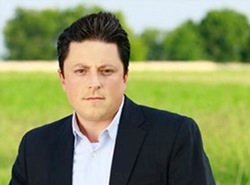
Rudy Ruiz, author, Seven for the Revolution
Born and raised along the United States Mexico border Ruiz is president and chief creative officer of Interlex Communications, a cause-related social marketing agency. His previous works include ¡Adelante! and Going Hungry.
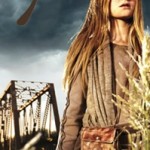
Click to buy Seven for the Revolution
Comments:
Filed Under: Books
Posted by Elena del Valle on May 29, 2014

The Son Also Rises
Photos: Princeton University Press
Is there a relationship between the social status of parents and that of their children or grandchildren and so forth? Does someone’s path to success depend on the status of their parents? Is nature stronger than nature when it comes to finding success? While no one has all the answers a recent book addresses the complex and controversial subject with academic aplomb and thoroughness.
Despite common perceptions about rapid and pervasive social mobility, close scrutiny of historic data by surnames (passed down through fathers) in various countries indicates there are much lower rates of social mobility when surname data is used to calculate social mobility rates than when conventional measures are applied, according to Gregory Clark, author, The Son Also Rises: Surnames and the History of Social Mobility (The Princeton Economic History of the Western World) (Princeton, $29.95), a book on the subject published this year. Social mobility, he goes on to say, may take place at a similar rate for several measures of status such as education, wealth, belonging to the politically elite and work or employment status. The rate of persistence, his analysis indicates, is constant across starkly varying social systems. The results, he finds, are widely varying between surname groups and individual families.
In the United States, he says in the Introduction, members of poor minority groups appear at first glance to be facing a tougher path to mobility than the mainstream. Blacks, Native Americans, Latinos and Jewish Americans experience a slower movement toward the mean than may be expected. However, because they have high visibility and many believe the majority has rapid mobility they may erroneously appear exceptional when they’re not.

Gregory Clark, author, The Son Also Rises
In the book, he examines data from England, United States, Sweden, India, Japan, Korea, China, Taiwan and Chile and concludes that surnames are a useful tool to measure social mobility. They reveal a much slower rate of intergenerational mobility than commonly believed by some sociologists and economists. Social status, he concludes, is an inherited trait like height. Although it may take many generations, social mobility, he estimates will eventually level out, erasing advantages or disadvantages. The variation in social status, he says, may be predicted based on family background, who might be driven to succeed and have the ability to do so, between 50 and 70 percent of the time.
The 364-page hardcover book is written in language likely to appeal to academics and peppered liberally with graphs and analysis. It is divided into sixteen chapters and three main sections, Social Mobility by Time and Place, Testing the Laws of Mobility, and The Good Society.
Clark, professor, economics at the University of California, Davis, is also author of A Farewell to Alms: A Brief Economic History of the World.

Click to buy The Son Also Rises
Comments:
Filed Under: Books





































